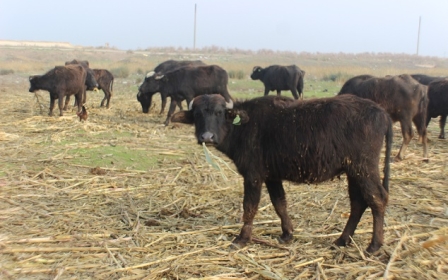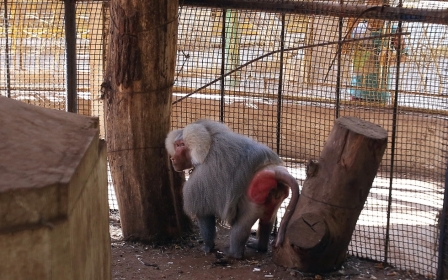In pictures: Pigeon keeping in Syria’s camps for the displaced
Flocks of pigeons fluttering over camps housing displaced Syrian in rural Idlib are a common site,but unlike their urban cousins, most of these birds are not out looking for scraps of food. Raising pigeons is a popular pastime among men in this rebel-held corner of the country. The birds provide a break from the monotony of camp life and give the men a sense of purpose in what feels like a situation that shows little sign of ending anytime soon.
Muhammad al-Abrash is one such pigeon keeper and a veteran by the standards of the camp, as he was raising the birds before he fled his home. When fighting between Syrian government and opposition forces encroached on his town of Maara (also known as Marat al-Naasan) in eastern Idlib in early 2020, he fled to a camp deeper inside rebel-held territory, leaving his beloved pigeons behind amid the chaos, before risking his life in order to rescue them.
“I took my wife and children first, and then the furniture,” he says. “The town was subjected to air strikes and artillery bombardment but I managed to get them out and bring them with me to the camp."
Abrash, who owns 90 pigeons, including 30 chicks who cannot fly yet, was driven by his strong attachment to the creatures. “I risked my life for the birds because I love them. They are in my custodianship and I cannot forsake them.”
The Syrian organises his birds into three types; those that have just been born, those that are young and which have only recently started learning to fly, and those that are capable of full flight, which he regularly allows out to fly over the camp. Birds designated for reproduction are also kept apart. Some are kept aside for sale to other breeders and as pets.
Pigeon selling can be extremely lucrative, especially for displaced Syrians in rural Idlib, who often live in miserable conditions in the camps. Abrash considers raising the birds a profession that allows him to support his family. The pictures of the pigeons are shared among fellow breeders and hobbyists on WhatsApp groups, which can lead to purchases.
The differences in prices can be drastic depending on the characteristics of the pigeons, ranging from as little as a dollar, up to $20,000. Factors that influence the price include the beauty of the bird, the length and shape of its neck, the length of its feet, and the curvature of its beak. Abrash estimates that a typical bird he owns is worth around $100.
Given the number of pigeons Abrash owns, he is forced to categorise them according to their characteristics. He says: “The pigeons have many different names that are long and difficult to summarise but some of the varieties I have include Blue, Israeli, Kashmiri, Qallab, Nahasi and Al Arjeni.”
After a decade of war and more than a year of living in a tent, Abrash hopes to return to his home village one day and raise his pigeons in more relaxed circumstances.
Middle East Eye delivers independent and unrivalled coverage and analysis of the Middle East, North Africa and beyond. To learn more about republishing this content and the associated fees, please fill out this form. More about MEE can be found here.




